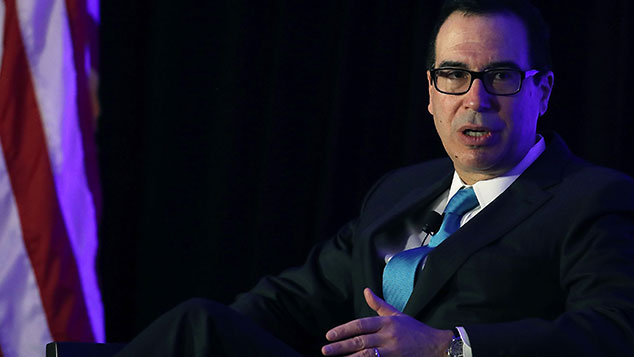
At the time of writing, the US government is trying to pass a bill that will grant it enough funding to keep running until the middle of next month.
If the bill doesn’t pass, then the government will run out of money, and will have to shut down.
Wow. That sounds quite serious.
But is it?
This is not the first time the US government has shut down
For a bit of perspective, the last time the US government shut down was way back in… 2013.
There have – according to Capital Economics – been 18 shutdowns since the mid-1970s.
So immediately you know that while this might be inconvenient, it isn’t necessarily that big a deal.
That said, most of those only lasted for a few days and were blips. The most recent ones – in 1995 and 2013 – “both proved to be longer and more costly than those earlier episodes”.
The one in 1995 lasted for 21 days – that was Democrat president Bill Clinton vs a Republican-controlled Congress. And the one in 2013 lasted for 16 days, which was Barack Obama against, again, a Republican-controlled Congress.
This time, while the Republicans in the House have passed the bill, the Senate is much more divided. They’ll be voting today, but it’s not clear that the bill will pass.
So how did we get here?
The US hasn’t agreed a budget deal to cover the entire fiscal year. As a result, Congress has to keep passing short-term resolutions to maintain current levels of government spending. The latest of these bills is set to lapse this weekend.
So now the government is trying to rush through a new bill to keep the funding going until the middle of February. The trouble is, president Donald Trump has been stirring things up again.
Without wanting to get deep into it, the Democrats are worried about immigration laws being too harsh on young immigrants, while some Republicans also oppose the short-term funding, arguing that it harms the military.
And in the midst of it all, Trump’s not exactly one for being diplomatic.
So it’s quite possible that the shutdown could happen. This in itself doesn’t necessarily do much more than inconvenience a lot of people. Basically, non-essential government workers will have to down tools and go home on unpaid leave, but the most important services will still operate.
And once the shutdown ends, the staff who were “furloughed” (laid off) get paid in full. “The upshot is that a shutdown, even if it lasted for a week or more, would have only a very modest impact on first-quarter GDP growth,” notes Paul Ashworth for Capital Economics.
So ultimately, assuming it does end up getting fixed in the longer run, this is mostly all about the showbiz of politics.
A bigger headache for the US Treasury is coming
But what’s more interesting is what’s going on in the US bond market. As Ashworth points out, there’s a bigger budget issue floating around in the background. The US needs to raise the debt ceiling again.
The debt ceiling is an entirely artificial legal constraint on the amount the US is allowed to borrow. The law was introduced with the intention of keeping government spending capped – or at least highlighting levels of spending. But you might as well try to outlaw gravity.
So instead, every so often, you need to have this administrative charade whereby the debt ceiling gets raised.
Trouble is, that leaves a huge hostage to fortune. Whoever is in opposition can use the debt ceiling as leverage. And if the debt ceiling doesn’t get raised, it means the US government can’t borrow more money, and the risk is that the Treasury might run out of money and literally be unable to make payments on US Treasury bonds.
That – a default – has never happened, although it did come close in 2011 (which is when the US lost its AAA-credit rating as a result).
It looks like the money runs out perhaps in March or even early April. Well before that, the Treasury will have to fiddle around with the figures and start prioritising some things and cutting back on others to keep things running. As a result, says Ashworth, “the real risk is that a partial shutdown now makes it harder for Congress to agree on a deal to raise the debt ceiling in time”.
Meanwhile, bond yields are already ticking higher. In fact, the yield on US ten-year Treasury bonds has nudged above 2.63% today. That number is significant because until now, it represented the 2017 high. It’s also the figure that the “other” bond king – Jeff Gundlach – suggested represented the point at which we could start believing that the bond bull market is truly over (the original bond king, Bill Gross, already said that it’s done and dusted).
For now, markets are relaxed. But this is one to keep an eye on.